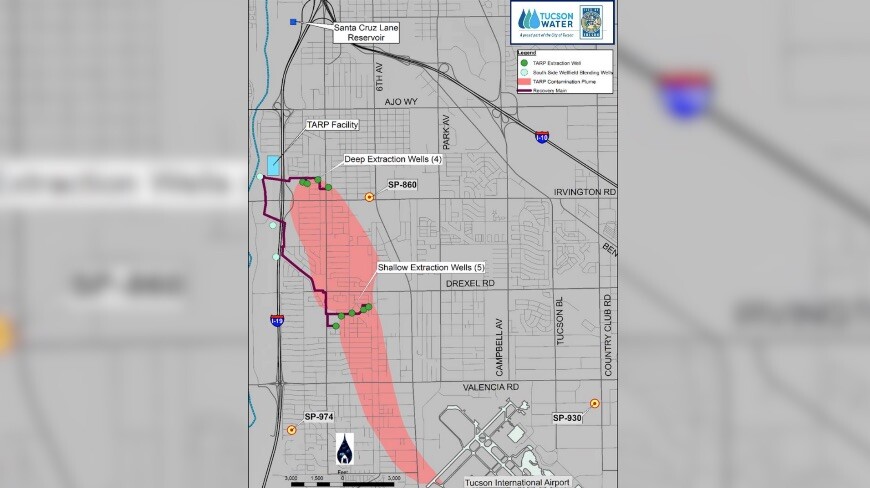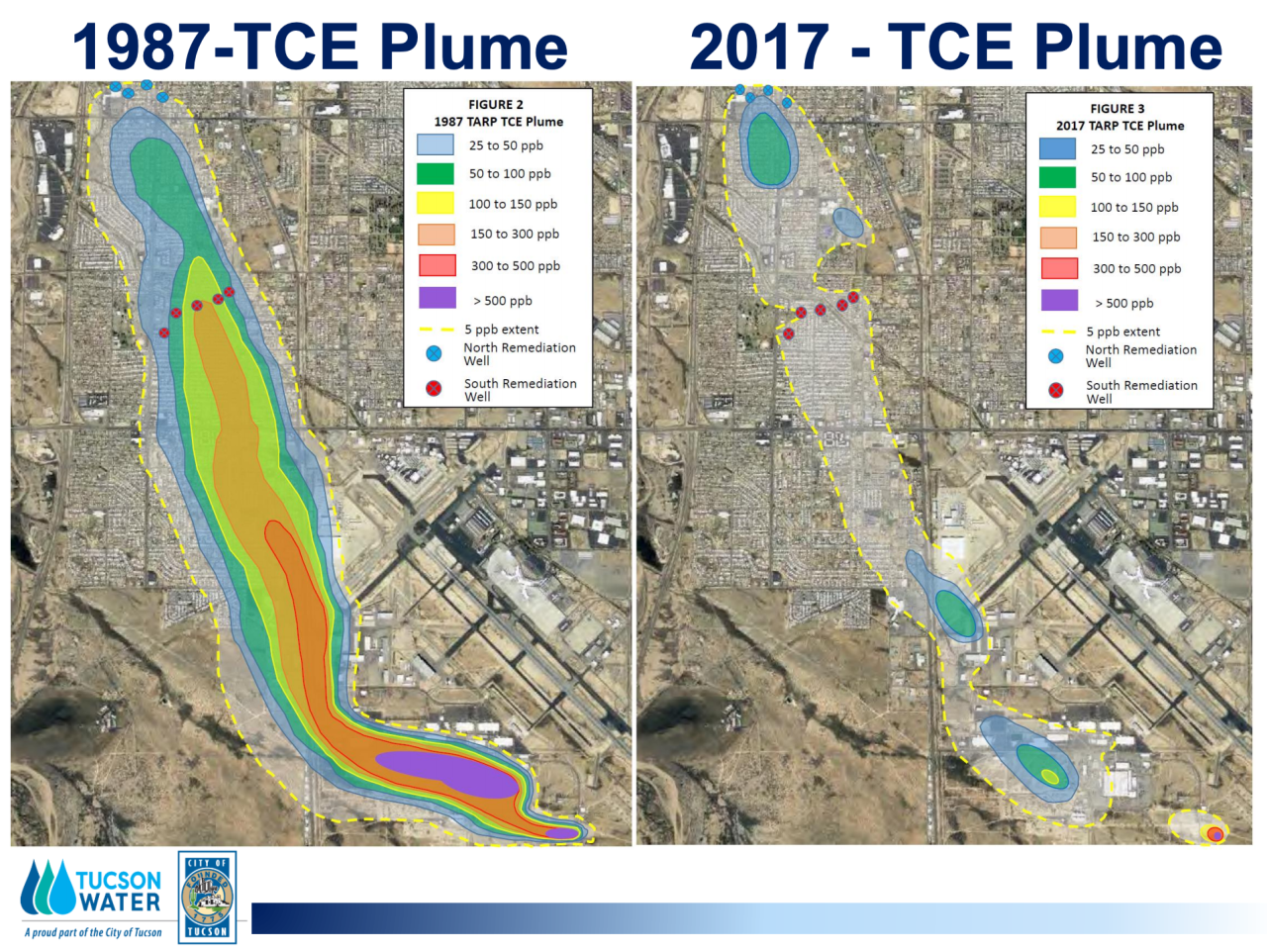TUCSON, Ariz. (KGUN) — 40 years after trichloroethylene (TCE) was detected on the south side of Tucson, some residents are still skeptical about the water they are drinking.
Tucson Water showed KGUN 9 how it has made sure our drinking water will always be safe in the decades since the contamination.
“At least since 1987 nobody has been getting any contaminated water from the tarp,” said Fernando Molina, spokesperson for Tucson Water.
While the water was being contaminated, Tucson was the largest city to run solely off of groundwater. However, once it was brought to light that the water was contaminated, the city took over operations and implemented a plan of attack.
That plan is better known as the "TARP enhanced recovery process." A cleanup effort funded by the super fund that the responsible parties pay into, according to Tucson Water.

“These wells play a very important role because besides pumping up contaminated water. They create a barrier to prevent the contamination from spreading northward,” explained Fernando Molina.
He explained how the chemical is eliminated.
“From 1991 until about 2012, we were using the air stripping process to remove the TCE. Again, that was a fairly simple process. It just involves blowing warm air against the flow of water. We would strip those TCE molecules from the water [and] capture them in the air. Then run it through a filter and capture the contamination,” he said.
He explained to KGUN 9 that the wells located around the contaminated area, better known as the TIAA plume, have no trace of TCE.

“We regularly collect samples and we're able to monitor to see if the plume is getting smaller, and it is, and the concentrations are going way down. And one way we really know that it's working is literally a half a block away from this well,” he explained.
RELATED: 40 years after TCE water contamination: Victims still suffer
From 2017 to now, things had to change because another contaminate was found in the water— 1,4 dioxane. Tucson Water began using a process known as advanced oxidation.
“This involves bringing the contaminated water to the same facility -- we just had to modify it completely. We built a whole new process, the contaminated water enters the facility. We add a highly concentrated solution of hydrogen peroxide which starts the oxidation process,” explained Molina.
Molina explained even 40 years after the contamination, the work continues and it’s working, thanks to the sampling wells -- the original nine that were closed because of the contamination.
That's something Robert Jaramillo, a member of Las Aguas -- a community-based organization that was created because of the water contamination -- said deserves credit.
"You got to give credit where credit is due. They're doing their due diligence to clean up the contaminated water well on site, and the city, of course, is responsible for anything, I believe, north of Los Reales road," said Jaramillo.
However, he said another epidemiology study is needed.
“Because by that time all the folks that have lived here and grew up in the south," he explained. "I had already gone and lived elsewhere -- whether moved out of state or moved other parts of the city."





